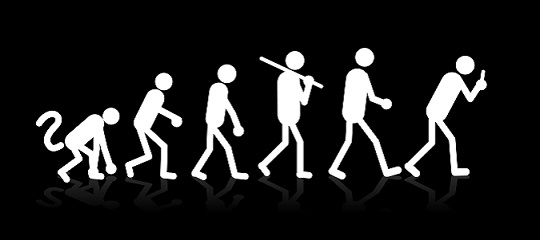The evolution of value
Share

Value is an elusive notion, writes Karl Treacher, and probably the business world’s most misrepresented concept.
 In 1991 I borrowed $2000 from my parents for my first computer. It was a secondhand Mac. After removing the screen, that very same Mac now hangs from a tree in my backyard – as a birdhouse. Its value has changed. Once valuable to a university student, it now provides value to a family of Indian mynas in the form of shelter. I’d have more chance selling that Mac as a birdhouse than as a computer.
In 1991 I borrowed $2000 from my parents for my first computer. It was a secondhand Mac. After removing the screen, that very same Mac now hangs from a tree in my backyard – as a birdhouse. Its value has changed. Once valuable to a university student, it now provides value to a family of Indian mynas in the form of shelter. I’d have more chance selling that Mac as a birdhouse than as a computer.
Value is an elusive concept.
It’s probably the idea most often misrepresented in marketing, business and, well, the world. The go-to metric is dollars, pounds or whatever currency people are paid in. But even by using ‘money’ to understand value, we can see how fluid value actually is – something is only worth a specific amount for a point in time. In the days, weeks and months before and after, inflation or deflation will have altered its worth.
This is all too apparent for most marketers reading this with their products and services purchased across markets.
With value such a changeable concept, marketers of all different functions have refined the idea into value propositions: customer, employee, investor etc. This is useful as it helps focus and articulate strategy. But how did we get here? And does the use of value propositions risk creating something that is less than the sum of its parts?
Let’s take a short wander through the modern history of value…
In its Neanderthal stage, marketing considered value to be a function of product benefit and price. It assumed consumers were very logical, buying the best for their purposes at the best price. These were the glory decades for billboards, print and radio.
In its next Homo erectus stage, the idea of value didn’t change greatly, but the delivery media did. Now came the glory decades for TVCs, where they stalked the earth. Cowering
beneath them were the sleeping giants of marketing: brands. Sorry to mix metaphors, but this was the dark age for brands. The function of ‘brand’ was to be a convenient visual recall mechanism, but brands apparently didn’t have value in and of themselves. And so marketers
went, prominently positioning price and benefit in front of consumers, heading off to the mythical three martini lunch and then somehow driving home to the suburbs… in a red Mazda MX5.
As markets swelled with competitors who first differentiated on product benefit and invested in brands, the concept of value expanded. Instead of value being the best benefit at the least cost, ‘value evolved’ encapsulated convenience and social capital. Today your brand has to be the best, the most desirable, the easiest to use/access, a combination of those… or you have your work cut out for you.
Social capital is the perception your customer believes your product will create about them.
This is when your customers and their peers authentically accept the invisible layer of meaning around your brand. If your customers are purchasing from your brand because of the social capital it offers them, you have a strong brand likely outperforming its competitors in your target market.
We all understand the value of convenience on a personal level. You expect to pay the $1 extra for a litre of milk at the corner store. But, outside service industries, the value of convenience for consumers is frequently overlooked. This is especially true for industries disintermediated by digital technology. Travel agencies fell to price and convenience – primarily convenience. Music stores to the convenience of mp3 players combined with iTunes… and then mp3 players and iTunes to smartphones and Spotify. Taxi services globally are investing heavily in lobbying and legal costs to fight Uber and Lyft, ignoring that consumers have a low involvement with their product and their new competitors have come along and built a brand through improving the product’s convenience to both the customer and the provider (driver). What convenience often means in such a networked world is simplicity. Complicated brands, services and goods cost their organisations more because their customers are forced into high cost service and sales channels.
Simplified brands earn – The Global Brand Simplicity Index 2014 found 38% of customers would pay more for a simpler experience. And those experiences are so out-of-the-norm, the same report found 70% of customers are more likely to recommend a brand just because it’s simple.
And some value offerings aren’t evolving, but are in fact a product of evolution. Homo sapiens are naturally social animals. If your brand offers them personalised interactions or brings convenience to their social desires, your brand is valuable. In service brands, we’re seeing the rise of branded behaviours and in retail the impact of branded experiences and of the concierge-led store. Oh, and on the last point… all social media brands and, to a slightly lesser extent, all B2C tech brands.
But things have seemingly sped up. We moved rapidly from a single concept of value to many concepts of value, but the transfer was always binary in the B2C world. Customers used money to purchase goods and services. Brands valued information about their customers, but wouldn’t purchase that from them. That’s changed.
Although still disproportionately following the traditional route, customers have become savvier about the value of their data and networks. They’re now selling that data to brands through intermediaries. Brands are now bartering with customers for access to their networks. On launch, social shopping brand/fashion e-tailer, Everlane, only admitted customers after they’d invited a certain number of their friends through social networks and then offered tiers of benefits after that. Today, it issues $25 credits when friends make their first purchase. It’s the inverse of traditional added value: offering your goods or services in exchange for the data and/or networks of your customers.
This is the Wild West of value currently. There are big rewards left on the table by iconic brands here. But the horizon is also rapidly receding and opening up new territory for the exchange and redefinition of value… and I’m not talking about the sort of redefinition of value that now houses a family of Indian mynas.















